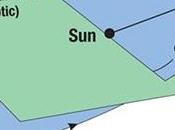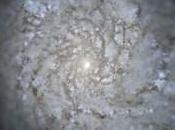Tra le specie a rischio di estinzione, ci sono solo tigri e orsi polari, che è spesso definito come diventare simboli della lotta per conservare la biodiversità e combattere il cambiamento climatico.
Anche il più piccolo gattino del mondo, anche il gatto delle sabbie (Felis margarita), sono classificati dalla IUCN in pericolo critico (CR), con una popolazione di non più di 200 esemplari.
Il gatto delle Sabbie è una palla di pelo morbido che viene da adulto a pesare tra 1,5 e 3,5 chili, I grandi occhi giallo-verdi sono il segno distintivo di questa specie, insieme con le orecchie altrettanto grandi appuntite, di colore più scuro rispetto alla maggior parte del mantello, che è giallo sabbia.
I suoi nemici sono i lupi, serpenti, uccelli rapaci e soprattutto gli uomini. Anche se la caccia è ora proibita in molti paesi, infatti, questi cuccioli sono stati a lungo vittime, per la loro natura docile e mancanza di paura nei confronti delle persone.
La loro casa è infatti il deserto, le zone più aride del pianeta, dove si riescono a sopravvivere grazie alla folta pelliccia che li protegge dalle temperature estreme e la temperatura vertigini che caratterizzano il passaggio dal giorno alla notte. Inoltre hanno sviluppato la capacità di estrarre il liquido dal cibo necessario per sopravvivere.
Nonostante la loro sorprendente capacità di adattamento corrono il serio rischio di scomparire. È per questo che la notizia della nascita di quattro cuccioli estate scorsa al Ramat Gan di Tel Aviv è stata celebrata come una nuova speranza per questa specie.
The Cat of the Sands
Among the species at risk of extinction, there are only tigers and polar bears, which is often referred to as become the symbols of the struggle to conserve biodiversity and combat climate change.
Even the smallest kitten in the world, the Cat of the Sands (Felis margarita), are classified by the IUCN as Critically Endangered (CR), with a population of no more than 200 specimens.
Cat of the Sands is a soft ball of fur that comes from adult to weigh between 1.5 and 3.5 pounds, The big yellow-green eyes are the hallmark of this species, together with the equally large pointed ears, darker in color than most of the mantle, which is yellow sand.
His natural enemies are wolves, snakes, birds of prey and especially men. Although hunting is now prohibited in many countries, in fact, these kittens will have long been victims, for their docile nature and lack of fear towards people.
Their home is in fact the desert, the driest areas of the planet, where they manage to survive thanks to the thick fur that protects them from extreme temperatures and dizzy temperature characterizing the transition from day to night. They have also developed the ability to extract the liquid from the food needed to survive.
Despite their amazing ability to adapt these little kittens serious danger of disappearing. This is why the news of the birth of four cubs last summer at the Ramat Gan Tel Aviv was celebrated as a new hope for the conservation of the species.







